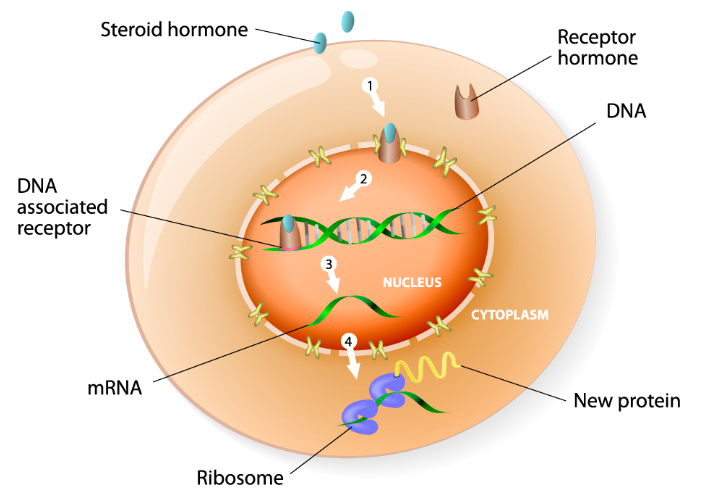What are steroid hormones?
Steroid hormones are a group of compounds with a cyclopentane polyhydrophenanthrene structure formed by cholesterol catalyzed by cytochrome P450 enzymes. Steroid hormones are divided into four main groups: progesterone, corticosteroid, estrogen, and androgen. Steroid hormones play an important role in regulating human metabolism, maintaining the stability of the internal environment, growth, development and reproductive behavior.

Detection of steroid hormones
Steroid hormones are low in content, similar in structure and diverse in living organisms, so accurate quantification of steroid hormones requires a highly sensitive instrument and a method capable of generating accurate results. At present, the main samples for detecting steroid hormones are blood samples, hair, urine, saliva, endometrium, etc.
The establishment of the analytical method includes sample processing and the selection of the analytical method. A good sample pretreatment method can serve to enrich the target components, eliminate or reduce matrix interference, and improve sensitivity, while on the contrary, it can easily introduce errors and prolong the analysis time. In addition, a reasonable analytical method can provide more accurate results for experimental studies and ensure the reliability of the results.
1. Sample processing method
The methods for the analysis of steroid hormones in the blood are divided into direct processing and processing with the help of derivatization. The main methods of direct processing are protein precipitation (PP), liquid-liquid extraction (LLE) and solid-phase extraction (SPE). The derivatization method is mainly used for compounds that are particularly difficult to ionize such as estradiol, estrone and pregnenolone, especially for special clinical samples with high detection requirements.
2. Detection method
Some steroid hormones are present at low levels in the blood and therefore require the use of sensitive assays. The main steroid hormone assays commonly used by Creative Proteomics include the following.
- High-performance liquid chromatography (HPLC)
HPLC is a non-destructive analytical method commonly used for the qualitative and quantitative analysis of organic compounds with a high boiling point, poor stability and large relative molecular mass. However, its selectivity is poor, sensitivity is low, and the amount of sample is large, so it often fails to meet the detection purpose. For steroid hormones with low content in vivo, HPLC cannot meet the detection requirements, so currently, tandem with mass spectrometry is often used.
- Gas chromatography-mass spectrometry (GC-MS)
GC-MS is characterized by high sensitivity, good selectivity, high energy efficiency and high speed. It can achieve high resolution detection of steroid hormones and provide rapid and reproducible results, so it is widely used for the analysis of steroid hormones.
Since steroid hormones are not volatile, analysis by GC-MS/MS generally requires derivatization, which can increase the volatility and thermal stability of steroid hormones. In special cases, such as the determination of testosterone content in cell culture media and estrogens in wastewater, derivatization is not required. Derivatization reactions change the chemical structure and properties of a substance by altering the functional groups of the compound, which can also significantly enhance the response value of the substance to be measured and achieve higher sensitivity. However, blood samples contain a large number of biological matrices with complex compositions, complicating the GC-MS/MS analysis.
- High-performance liquid chromatography-mass spectrometry (HPLC-MS/MS)
HPLC-MS/MS is a powerful analytical technique that leverages the strengths of HPLC and MS by combining the two to provide superior selectivity. The optimized HPLC-MS/MS provides accurate and precise separation and determination of high boiling point, difficult to volatilize and thermally unstable compounds.
HPLC-MS/MS has become an advantageous technique for steroid hormone determination. HPLC-MS/MS for endogenous steroid hormone assay procedures greatly reduces sample and reagent consumption and pre-treatment time, and also avoids side reactions and losses during the reaction from the derivatization step. However, for some hormones that are extremely difficult to ionize and to meet the determination of samples with very low levels, it may also be necessary to enrich and concentrate them with the help of a conversion ion source or by using special columns and SPE columns to meet the detection requirements.
learn more: phosphatidylcholine structure



